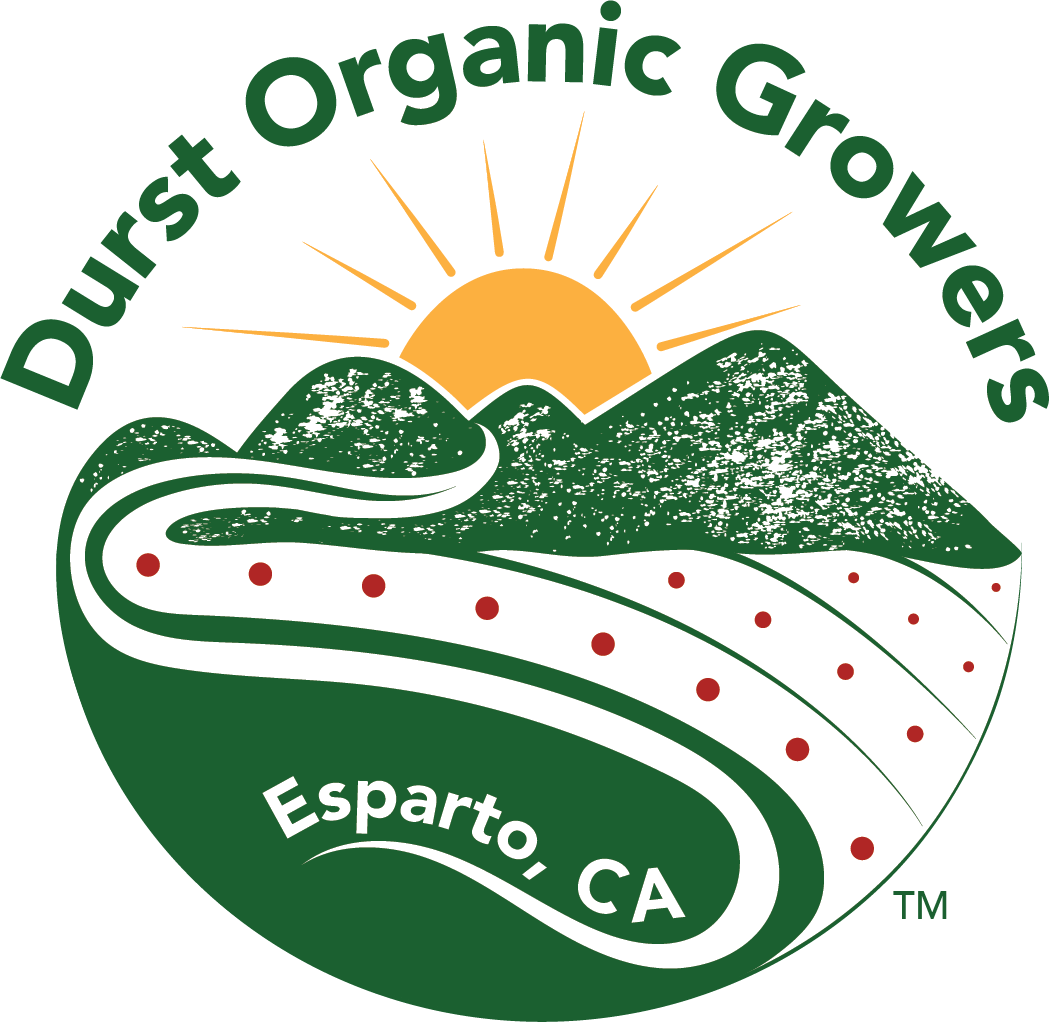Soil Fertility


Stewardship of Our Soils
Our soils are a reservoir of nutrients, microbes, and water. In nature, fertility is maintained by the constant recycling of organic matter (carbon). If we mimic and enhance this process on our farms, we would be returning all carbon and other nutrients that leave our farm in the form of food and oxidation. Understanding which nutrients are leaving and replacing them in the soil reservoir is the basis of good farming practices and soil stewardship.
At Durst Organic Growers, we utilize practices that maintain or increase the availability of nutrients that plants need to maintain health and produce an abundant harvest. This begins with understanding the “soil reservoir” and measuring its contents. We accomplish this by regular soil testing, petiol (plant tissue) sampling, and continuing education. These tools further our understanding of the relationship between plants, microbes, water, and soil chemistry. Organically approved nutrients are applied as needed to maintain and enhance this soil reservoir through years of experience working with varied crops and soil types.
At Durst Organic Growers, we utilize practices that enhance soil carbon and microbiological activity:
Cover cropping: (mainly vetch and barley) This is the simplest way to build soil organic matter (carbon). Cover cropping is growing a crop to disc into the soil that increases the soil carbon. This additional organic matter is feed for the millions of microbes and other critters that live in the soil and allows them to thrive. They in turn play a critical role in decomposing this plant matter and making the nutrients it contains available to subsequent crops.
Returning of crop residue to soil: After harvest, we return all remaining parts of the plant back to the soil to become food for the soil microbiological community. This practice also results in increased soil carbon.
Maintain conditions conducive to microbiological health: Maintain soil moisture, proper PH, and protection from sun and harsh weather
Crop rotation: Proper crop rotation breaks up disease cycles as pests fond of a certain crop are interrupted and allows time for soil to build up nutrients previously use by last crop
Minimum Tillage: Soil disruption can be harmful to micro-biotic soil communities. By keeping tillage practices to a minimum, we can be less disruptive while also reducing soil compaction and erosion.
Learn More About Our Ecosystem…
Planting season is a frenzied season. There is a short window in which we need to “terminate” our cover crops – we talked about that in the last letter – and prepare the field to be planted anew in “cash” crops. Getting all the beds in all the fields prepared at once is tricky (or, rather, impossible). We have a limited number of tractors and tractor drivers, and a seemingly unlimited amount of work to get done in what feels like a very limited amount of time.
It’s early April and we’re starting to believe Spring is here. The almond blossoms of our neighbors’ orchards have all fluttered to the ground, the oak trees dotting the hillsides are showing their bright green new leaves, and our asparagus is starting to emerge out of the ground at a steady pace.
February is a slow time of year here on our farm, especially during wetter years. The rain, though much appreciated, keeps us out of the fields – just as they dry out, another storm comes! – resigning us to equipment repairs and maintenance, site cleanup projects, and fine-tuning our plans for the coming seasons. And, now, setting up for asparagus!
Before welcoming the winter season, we had a few projects needing attention. The biggest one, outside the scope of our normal annual tasks, was an irrigation infrastructure project.
While we, and many other farmers, still believe in the merits of certified organic, we feel the USDA is bending to well-financed lobbying efforts and is no longer upholding the standards outlined by the National Organic Program.
The process of taking down the tomato plants is not quite as tedious as getting them going, but is a cumbersome task no less.
While Labor Day may mark an end of summer for some, we generally look towards the crops to let us know when seasons end. September is a transitional period where summer and fall blend together, the seasonal crops and activities overlapping. Whether it’s “late summer” or “early fall,” the between time is full of excitement as we begin harvesting winter squash (also known as hard squash), officially finish with watermelon (but then continue to bring in smaller harvests from our grafted plants that are still somehow looking great), continue on with harvesting tomatoes (while starting to take down early plantings), and begin planting for fall (true fall, that is).
Right now, we’re harvesting the type of fruits we dream about in winter. Bright red watermelon so crisp, sweet, and juicy it “pops” when you cut into it; juice dripping down your hand as you enjoy a slice. The sweetest fresh corn and refreshingly delicate cucumbers. A medley of melons – true summer flavors. And, perhaps, the biggest treat: soil-grown, vine-ripened, peak-summer tomatoes.
About a month behind schedule, our asparagus harvest began in late March and is still underway. We hope you’ve been able to enjoy some of this spring treat, now possibly paired with peas! Our sugar snap pea harvest is just now starting! It’s a little later than usual for us due to planting late and cool spring growing conditions.
Cover crops are kind of a big deal in the organic farming world, and are becoming more widely used in conventional operations, as well. You may have heard of their benefits in “carbon sequestering,” a real buzz-topic of late, but the benefits of cover crops extend well beyond their ability to create, capture, and recycle carbon.













